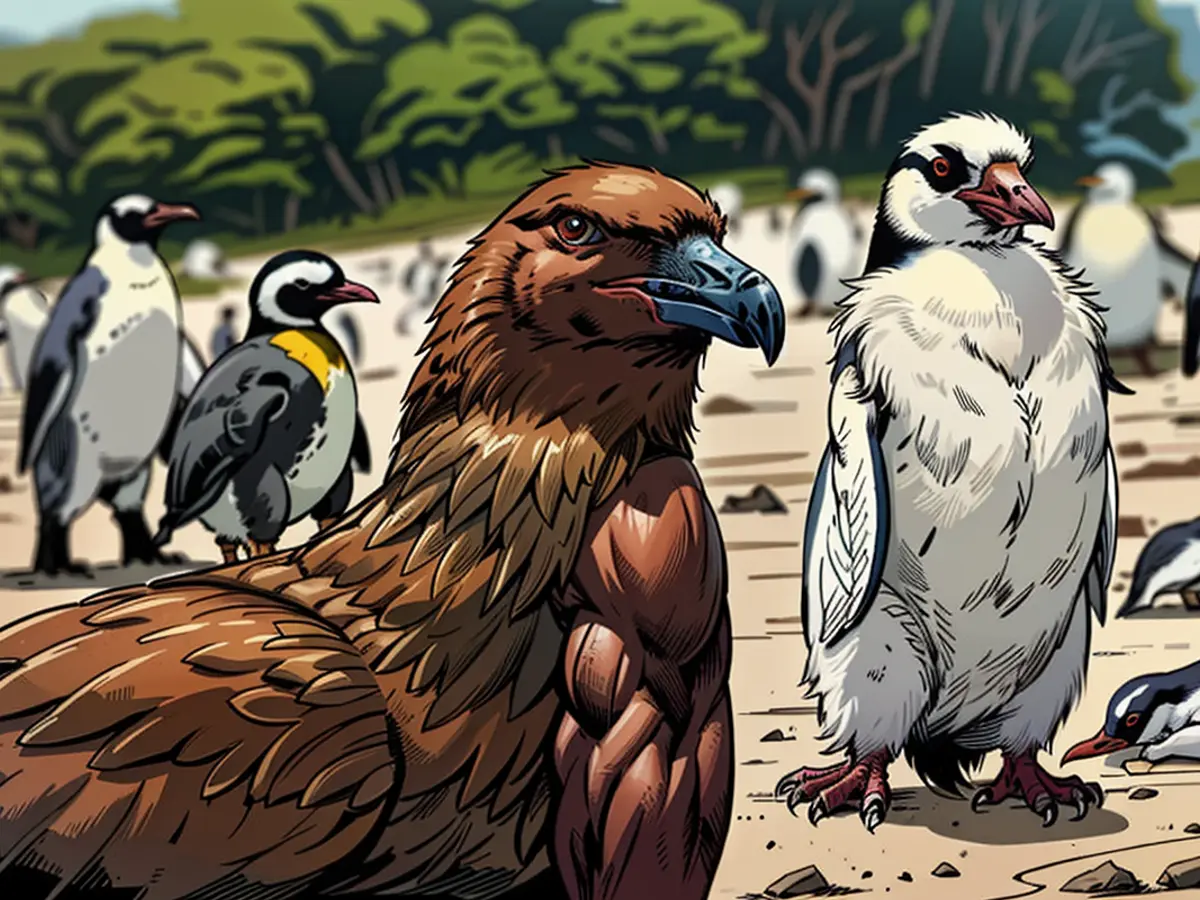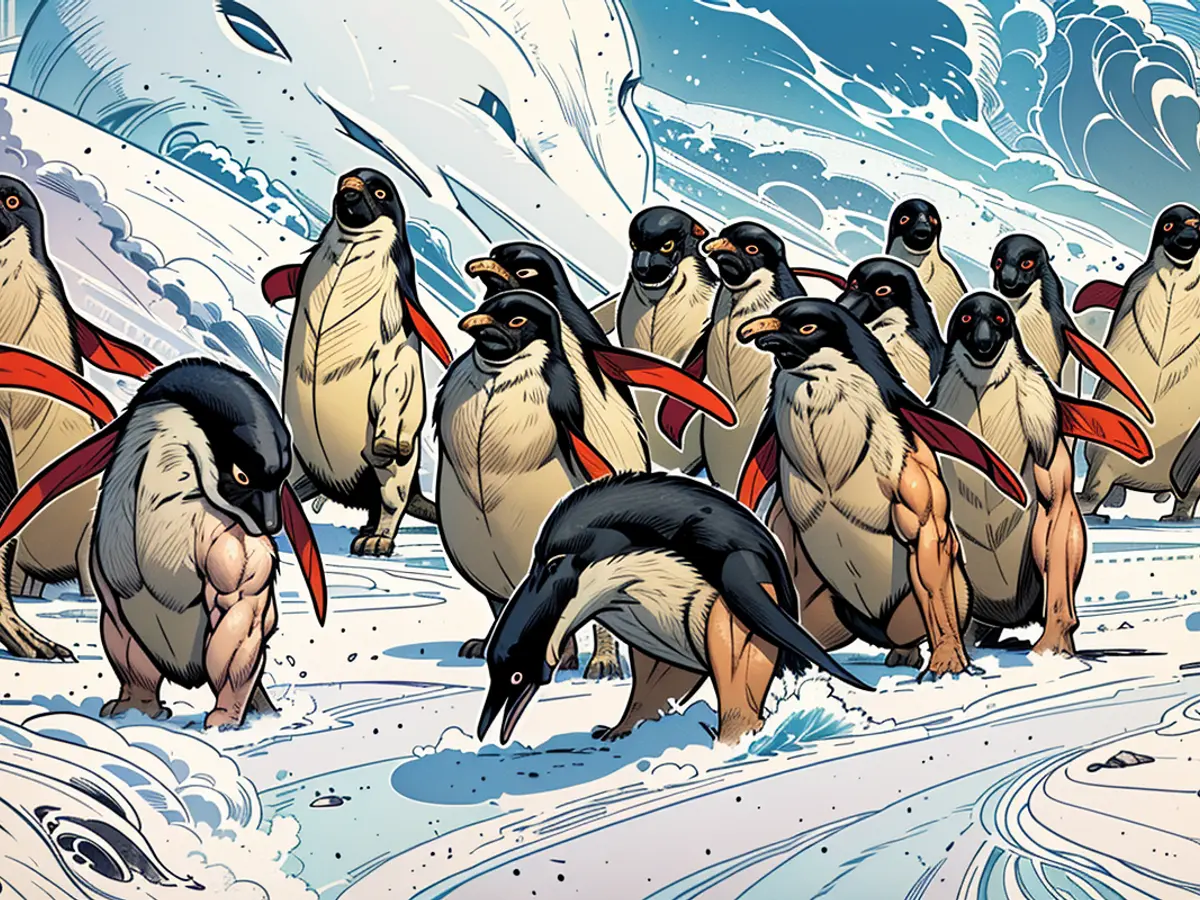- Antarctica is currently experiencing an outbreak of avian influenza. The question arises as to how the virus managed to reach such cold and isolated territories.
Until recently, Antarctica was thought to be free from the latest bird flu strain: Although flu viruses were present in the region, it wasn't the harmful H5N1 strain that emerged in 2020. This variant wreaked havoc on sea lions and elephant seals in South America, causing concern for dairy farmers in the US due to infected cows, and leading to millions of deaths among poultry and wild birds in Asia, Europe, and America. Experts held their breath for news from the South Pole.
That news came in February 2024: Argentine researchers detected the virus on the Antarctic Peninsula, home to the Brown Skua, a large raptor bird known for its aggressive appetite, even towards penguin chicks. Since then, scientists have reported numerous dead or sick birds, taking samples for analysis. In March, an international research expedition discovered dozens of dead Skuas on Beak Island. The H5N1 virus, whose full name is "H5N1 HPAIV (highly pathogenic avian influenza) of clade 2.3.4.4b", was found in 10 Skua carcasses.
The bird flu could potentially be spread by gulls
Given that Skuas feed not only on fish but also on penguin chicks and raid breeding colonies, scientists now fear that gulls could also carry the flu virus into the vast, closely packed penguin colonies. On Heroina Island at the northernmost tip of the Antarctic Peninsula, the virus seems to have already affected penguins: Experts found 532 dead Adélie penguins in the spring. Both chicks and adults appeared to have died quickly. With a large number of penguin carcasses on other islands, researchers estimate that thousands may have died. Although studies are ongoing, they consider it likely that the new aggressive bird flu is responsible for these deaths.
It was previously unclear how the aggressive virus reached Antarctica. A new study published in the scientific journal Nature Communications has now traced the path of the disease. Between South America and Antarctica, researchers took samples from sick animals, collected tissue from carcasses, and searched for bird flu genetic material in the samples as early as 2022.
The bird flu virus apparently took two different routes
Independently, a second route was confirmed through which the virus reached Antarctica: On the Falkland Islands, H5N1 was detected in Silver gulls and Black-browed albatrosses. In the end, the researchers identified eight infected species of wild birds and seals from the two island groups. The virus seemed particularly lethal for Southern elephant seals, Antarctic fur seals, and Brown Skuas.
The virus's family tree was also studied
Researchers discovered that all the viruses originated from South America. It's likely that the pathogens were introduced to Antarctica by migratory birds or other long-distance flying seabirds, using remote islands as "stepping stones" in the ocean.
H5N1 poses a threat to large penguin colonies
For Antarctica, especially its large penguin colonies, the arrival of H5N1 could be disastrous: Five of the world's 18 penguin species inhabit the Antarctic mainland, its ice shelves, and islands - including the Emperor Penguin and smaller Gentoo, Chinstrap, Crested, and Adélie Penguins. None of these species are believed to have significant immunity to the new H5N1 virus, leading some biologists to fear that entire colonies could die or lose an entire breeding season.
Many penguins are already under pressure, according to veterinarian Horst Bornemann. He works for the research section of Benthos Ecology at the Alfred Wegener Institute in Bremerhaven and evaluated the new study as an independent expert for the German Science Media Center in Cologne: "Climate change has already led to changes in the populations of individual penguin species such as Adélie, Chinstrap, and Gentoo Penguins due to changes in the food network." Shifts in the populations of Emperor Penguins are also observed along the continental shelves in the Southern Ocean, with areas of special ecological relevance shifting further south due to climate change. Penguin breeding and resting grounds have been shrinking for years.
As of now, scientists have limited ability to stop the advance of the virus towards the South Pole: "The H5N1 HPAI virus will probably continue to spread in the Antarctic wildlife and may infect the 48 bird and 26 marine mammal species that live in this region," says Thijs Kuiken, professor of comparative pathology at the Erasmus University Medical Center Rotterdam and not involved in the British study.
Authorities in Australia also prepare for the virus
In addition to Adélie Penguins, infected White-faced Storm Petrels and Wandering Albatrosses have also been found. And Antarctica is unlikely to be the last stop for the new bird flu: "In Australia and New Zealand, authorities are preparing for the introduction of the HPAI H5N1 virus, either from Antarctica or Asia, by conducting simulations and vaccinating captive endangered bird species against the virus," says Thijs Kuiken.
It's highly improbable to carry out a mass vaccination of wild penguins right now. The potential harm could be substantial if these timid creatures decided to scatter in terror upon seeing the scientists and their needles.
With the detection of H5N1 in Brown Skuas on Beak Island, concerns about the virus spreading to gulls increase, as Skuas feed on various sources including penguin chicks and raid colonies. The study published in Nature Communications reveals that the virus reached Antarctica through two separate paths: one through sick animals and carcasses in the South Atlantic, and another through infected wildlife on the Falkland Islands.








